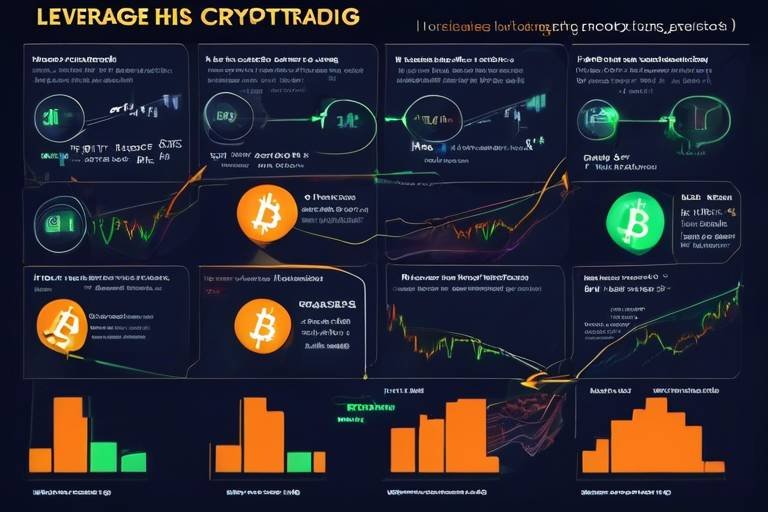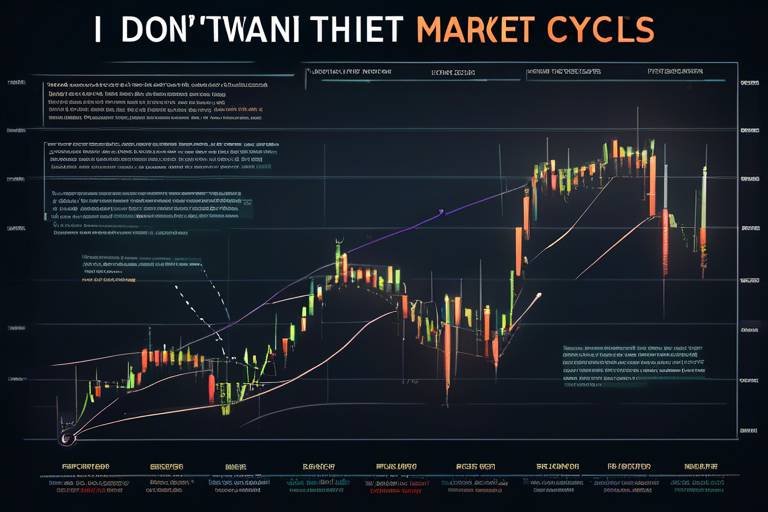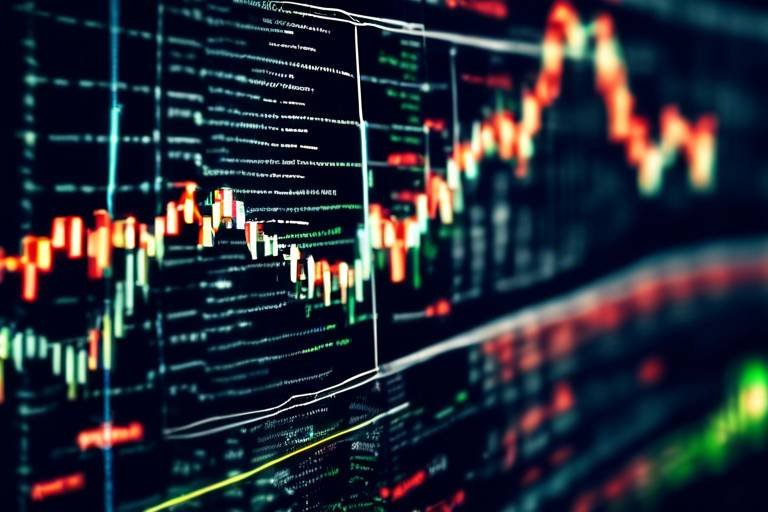Understanding Market Sentiment - Trading with Emotion
In the world of trading, understanding market sentiment is not just an advantage; it's essential. Market sentiment refers to the overall attitude of investors toward a particular security or financial market. It’s the collective emotion that drives decisions, often influenced by news, economic reports, and even the mood of the masses. Think of it as the market's "heartbeat"—it can pulse with excitement or slow down with fear, impacting the trading landscape dramatically.
When traders tap into market sentiment, they gain insights that go beyond mere numbers and charts. It's about reading the room, so to speak. Imagine walking into a party: the vibe can be electric or tense, and that atmosphere can dictate how people interact. Similarly, in trading, understanding whether the market is feeling optimistic or pessimistic can inform your strategy. Are people feeling bullish and ready to invest, or are they bearing down with caution? This emotional backdrop can lead to significant price movements, sometimes even more so than the underlying fundamentals.
As we dive deeper into this topic, we will explore how psychological factors like fear and greed play pivotal roles in trading decisions. These emotions can lead to irrational behaviors, causing traders to make impulsive choices. For instance, during a market rally, the fear of missing out (FOMO) can push traders to buy into a rising market without proper analysis, while panic selling during a downturn can lead to substantial losses. Recognizing these emotional triggers is the first step toward mastering market sentiment.
Moreover, sentiment analysis is not merely about gauging emotions; it involves using various tools and indicators to quantify these feelings. From sentiment indicators like the Fear and Greed Index to analyzing social media chatter, traders have a plethora of resources at their disposal. By combining these tools with traditional technical analysis, traders can create a more holistic view of the market, enhancing their decision-making process.
In summary, understanding market sentiment is akin to having a compass in the often tumultuous seas of trading. It helps navigate through the waves of emotions, guiding traders toward more informed decisions. As we continue this exploration, we will uncover the intricacies of identifying market sentiment, the impact of news events, and effective strategies for trading with emotion.
Understanding the psychological factors that drive traders' decisions is crucial. This section delves into emotions like fear and greed, which can significantly impact market movements and individual trading strategies.
Recognizing market sentiment involves analyzing various indicators and trends. This section discusses tools and methods traders can use to gauge overall market mood and sentiment shifts.
Sentiment indicators provide valuable insights into market psychology. This part explains how to use tools like the Fear and Greed Index to assess trader sentiment effectively.
Surveys and polls can reveal traders' emotions and expectations. This section highlights different survey methods and their relevance in understanding market sentiment.
Analyzing social media can offer real-time insights into market sentiment. This part discusses how platforms like Twitter and Reddit can influence trading decisions and market trends.
Integrating technical analysis with sentiment can enhance trading strategies. This section explores how to combine chart patterns with sentiment indicators for better decision-making.
News events can drastically shift market sentiment. This section examines how economic reports, geopolitical events, and corporate announcements affect traders' emotions and market reactions.
Economic data releases often trigger immediate market reactions. This part discusses how traders interpret these data points and their potential impact on sentiment.
Geopolitical events can create uncertainty in the markets. This section analyzes how such events influence trader sentiment and market volatility.
Developing effective trading strategies that incorporate sentiment analysis is essential. This section outlines various approaches traders can use to leverage sentiment in their decision-making processes.
- What is market sentiment? Market sentiment refers to the overall attitude of investors towards a particular security or financial market, often driven by emotions like fear and greed.
- How can I identify market sentiment? You can identify market sentiment through various indicators, surveys, social media analysis, and by observing market trends.
- Why is understanding market sentiment important? Understanding market sentiment helps traders make more informed decisions by recognizing emotional trends that can influence market movements.
- What tools can I use to analyze sentiment? Tools like the Fear and Greed Index, sentiment analysis software, and social media monitoring platforms can provide insights into market sentiment.

The Psychology of Trading
Understanding the psychological factors that drive traders' decisions is crucial in the ever-changing landscape of financial markets. When we think about trading, we often focus on charts, indicators, and data analysis. However, the **real battleground** lies within the minds of the traders. Emotions such as fear and greed can significantly impact market movements and individual trading strategies. Have you ever noticed how a sudden price drop can send traders into a panic, causing them to sell off their assets at a loss? This is a classic example of fear overriding rational decision-making.
Fear and greed are not just emotions; they are powerful forces that can dictate the behavior of even the most seasoned traders. Fear often arises from uncertainty or the potential for loss, leading to impulsive decisions. On the other hand, greed can manifest when traders become overly confident, pushing them to take excessive risks in pursuit of higher profits. This emotional rollercoaster can create a **self-fulfilling prophecy**, where fear leads to selling pressure, and greed fuels buying frenzies.
To better understand how these emotions influence trading, let’s break down the impact of fear and greed:
- Fear: It can lead to panic selling, causing a sharp decline in asset prices. Traders may exit positions prematurely, missing out on potential recoveries.
- Greed: It can drive traders to hold onto losing positions too long, hoping for a miraculous turnaround. This often results in greater losses than if they had cut their losses earlier.
Moreover, the psychological aspect of trading is not just limited to individual traders. It extends to the market as a whole. When a significant number of traders react to news or events in a similar emotional manner, we see shifts in market sentiment that can lead to volatility. This collective behavior can be likened to a herd mentality, where traders follow the crowd rather than relying on their analysis. Understanding this concept is essential for anyone looking to navigate the markets effectively.
In addition to fear and greed, other psychological factors come into play, such as overconfidence, loss aversion, and confirmation bias. Overconfidence can lead traders to underestimate risks, while loss aversion often causes them to hold onto losing trades longer than they should. Confirmation bias can skew a trader’s perspective, as they may only seek out information that supports their existing beliefs, ignoring contrary data that could inform better decisions.
To sum up, the psychology of trading is a complex interplay of emotions that can significantly affect trading outcomes. By acknowledging and understanding these psychological factors, traders can develop better strategies to manage their emotions and make more informed decisions. After all, trading is not just about numbers; it’s also about the **human experience** that drives those numbers.
- What role do emotions play in trading? Emotions like fear and greed can heavily influence trading decisions, often leading to irrational behaviors that impact market movements.
- How can traders manage their emotions? Traders can manage their emotions by developing a solid trading plan, adhering to risk management strategies, and practicing mindfulness techniques.
- What is the herd mentality in trading? The herd mentality refers to the tendency of traders to follow the crowd, often leading to market trends driven by collective emotions rather than fundamentals.

Identifying Market Sentiment
When it comes to trading, understanding market sentiment is like having a secret weapon in your arsenal. It’s not just about the numbers on your screen; it’s about the collective emotions and attitudes of traders that can sway those numbers. So, how do you identify this elusive sentiment? Well, it involves a combination of analyzing indicators, observing trends, and keeping a finger on the pulse of market psychology.
One of the most effective ways to gauge market sentiment is through a variety of tools that provide insights into the mood of the market. Think of these tools as your emotional compass, guiding you through the turbulent waters of trading. For instance, indicators like the Fear and Greed Index can offer a snapshot of whether traders are feeling optimistic or pessimistic. This index ranges from 0 to 100, where lower values indicate fear and higher values suggest greed. It’s a simple yet powerful way to assess market conditions at a glance.
Moreover, you can also look at sentiment indicators that measure the ratio of bullish to bearish traders. These indicators can help you understand whether the majority of traders are optimistic about a particular asset or if they are bracing for a downturn. By keeping an eye on these metrics, you can make more informed trading decisions and potentially capitalize on market movements before they happen.
Sentiment indicators are crucial for any trader looking to navigate the emotional landscape of the market. Here are some popular sentiment indicators you might want to consider:
- Fear and Greed Index: As mentioned, this index provides a quick overview of market sentiment, helping you to understand the prevailing emotions.
- Put/Call Ratio: This ratio compares the volume of put options to call options. A high ratio indicates bearish sentiment, while a low ratio suggests bullish sentiment.
- Market Volatility Index (VIX): Often referred to as the “fear gauge,” the VIX measures expected volatility in the market. A rising VIX typically indicates increasing fear among traders.
In addition to these indicators, it’s essential to consider the context in which they are used. For example, a high Fear and Greed Index might suggest a market bubble, while a low VIX could indicate complacency among traders. Understanding the interplay between these indicators can provide deeper insights into market sentiment.
Another effective method for identifying market sentiment is through surveys and polls. These tools can reveal the emotions and expectations of traders, offering a more human perspective on market dynamics. Various organizations conduct regular surveys that ask traders about their outlook on the market, which can be a goldmine of information. For instance, if a survey reveals that a significant percentage of traders are feeling bullish about a stock, it might be worth considering that sentiment in your trading strategy.
In today’s digital age, social media has become a powerful tool for gauging market sentiment. Platforms like Twitter and Reddit can provide real-time insights into what traders are thinking and feeling. By analyzing trends in social media conversations, you can identify shifts in sentiment that may not yet be reflected in traditional market indicators. For example, if you notice a surge in positive tweets about a particular cryptocurrency, it could signal an upcoming bullish trend.
However, while social media can offer valuable insights, it’s essential to approach this information with caution. The noise of social media can sometimes drown out the signal, leading to false positives. Therefore, combining social media analysis with other sentiment indicators can help you paint a more accurate picture of market sentiment.
In summary, identifying market sentiment is a multifaceted process that involves analyzing indicators, conducting surveys, and leveraging social media. By understanding the emotional undercurrents that drive market movements, you can enhance your trading strategies and make more informed decisions. Remember, the market is not just a collection of numbers; it’s a reflection of human emotions, and understanding those emotions can be the key to your trading success.

Sentiment Indicators
When it comes to trading, understanding market sentiment is like having a compass in a dense forest. It guides traders through the unpredictable landscape of financial markets, helping them make informed decisions. One of the most effective ways to gauge this sentiment is through the use of . These tools provide valuable insights into the collective emotions of traders, revealing whether the market is feeling bullish or bearish.
Sentiment indicators can be categorized into several types, each offering unique perspectives on trader psychology. For instance, the Fear and Greed Index is a popular tool that measures market sentiment based on various factors, including volatility, market momentum, and social media sentiment. This index operates on a scale from 0 to 100, where a score below 20 indicates extreme fear, while a score above 80 signifies extreme greed. Understanding where the market lies on this scale can help traders identify potential reversals or continuations in market trends.
Another key sentiment indicator is the Put/Call Ratio, which compares the volume of put options to call options. A high put/call ratio often suggests that traders are fearful and are hedging their positions, while a low ratio indicates a more optimistic outlook. By analyzing these ratios, traders can gain insights into the prevailing mood of the market and adjust their strategies accordingly.
Additionally, the Consumer Confidence Index (CCI) plays a crucial role in sentiment analysis. This index measures how optimistic or pessimistic consumers are regarding their financial situation and the overall economy. A rising CCI can indicate increased consumer spending, which often correlates with a bullish market sentiment, while a declining CCI may signal caution and a bearish outlook.
To effectively use sentiment indicators, traders should not rely solely on one tool. Instead, they should consider a combination of indicators to form a comprehensive view of market sentiment. For instance, integrating the Fear and Greed Index with the Put/Call Ratio and CCI can provide a more nuanced understanding of trader emotions. By doing so, traders can better position themselves to capitalize on market movements.
In conclusion, sentiment indicators are invaluable tools for traders seeking to navigate the emotional landscape of the markets. By understanding and utilizing these indicators, traders can enhance their decision-making process, potentially leading to more successful trading outcomes. Remember, the market is not just a series of numbers; it’s a reflection of human emotions, and sentiment indicators help us decode that intricate tapestry.

Surveys and Polls
When it comes to understanding market sentiment, serve as invaluable tools for traders seeking to gauge the emotional landscape of the market. By capturing the thoughts and feelings of a wide range of participants, these instruments can provide insights that are often missed by traditional analysis methods. Imagine standing in a crowded room, trying to discern the mood of the people around you. Just like you would listen to snippets of conversation, surveys and polls allow traders to tap into the collective consciousness of the market.
Surveys can take many forms, from simple questionnaires distributed to a select group of traders to extensive polls that gather data from thousands of respondents. The results can reveal trends in trader confidence, risk appetite, and even predictions about future market movements. For instance, a survey might ask participants whether they believe the market will rise or fall in the next month. The aggregated responses can indicate a bullish or bearish sentiment, helping traders make informed decisions based on the prevailing mood.
One popular method for conducting these surveys is through online platforms, where traders can quickly share their opinions. These platforms often feature questions that address key issues such as:
- Market direction expectations
- Investment strategies
- Risk tolerance levels
Moreover, the timing of these surveys can significantly affect their relevance. For example, conducting a survey just before a major economic announcement can yield insights into how traders are feeling about the potential outcomes. This real-time feedback can be crucial in a fast-paced trading environment.
Another important aspect to consider is the methodology behind the surveys. A well-designed survey should aim to eliminate bias and ensure that the sample is representative of the broader trading community. This means including a diverse range of participants, from seasoned professionals to retail traders. The more comprehensive the data, the more reliable the conclusions drawn from it.
In addition to traditional surveys, social media polls have gained traction as a modern approach to understanding market sentiment. Platforms like Twitter and Reddit allow traders to conduct quick polls, gathering instant feedback on market sentiment. This method not only provides immediate insights but also reflects the emotions of a younger, tech-savvy trading demographic.
However, it's essential to approach the results of surveys and polls with a discerning eye. While they can provide valuable insights, they are not infallible. Market sentiment is inherently volatile, and the opinions captured in a survey can change rapidly based on new information or events. Therefore, traders should consider these tools as part of a broader strategy that includes technical and fundamental analysis.
In summary, surveys and polls are powerful tools in the arsenal of a trader looking to understand market sentiment. By leveraging these insights, traders can align their strategies with the prevailing mood of the market, increasing their chances of success. Just like a skilled sailor navigates by the stars, savvy traders can chart their course by listening to the collective voice of their peers.

Social Media Analysis
In today's fast-paced trading environment, social media has emerged as a powerful tool for gauging market sentiment. Platforms like Twitter, Reddit, and even Facebook offer a treasure trove of real-time insights into how traders are feeling about various assets. Imagine walking into a bustling marketplace where everyone is chatting about the latest trends; that’s the essence of social media in trading. Traders can tap into this collective conversation to make informed decisions.
One of the most compelling aspects of social media analysis is its ability to capture the emotional pulse of the market. For instance, a sudden surge in tweets about a particular stock can indicate growing interest or concern, which may not yet be reflected in traditional market indicators. This phenomenon is often referred to as "social sentiment," and it can be a game-changer for traders looking to stay ahead of the curve.
To effectively analyze social media sentiment, traders often look at various metrics, such as:
- Volume of Mentions: A spike in the number of posts or tweets about a specific stock can signal a shift in sentiment.
- Sentiment Analysis Tools: Tools like Natural Language Processing (NLP) can help assess whether the tone of the discussions is positive, negative, or neutral.
- Influencer Impact: Posts from influential traders or analysts can sway public opinion and impact market movements.
Moreover, social media platforms serve as a breeding ground for rumors and speculation, which can lead to rapid price movements. For example, a viral tweet about a potential acquisition can lead to a sudden spike in a company's stock price, regardless of the underlying fundamentals. This is where the challenge lies—traders must discern between genuine sentiment and mere hype.
Another interesting aspect of social media analysis is the role of communities. Platforms like Reddit have given rise to trading communities, such as the infamous WallStreetBets, where users share their insights and strategies. These communities can create a sense of camaraderie among traders, but they can also lead to herd behavior, which can amplify market trends. Understanding the dynamics within these communities can provide valuable context for market movements.
In summary, social media analysis offers a unique lens through which traders can view market sentiment. By keeping an ear to the ground on these platforms, traders can gain insights that traditional analysis might miss. However, it's crucial to approach this data with a critical eye, as the rapid flow of information can sometimes lead to misinformation and emotional trading decisions.
- How can I start analyzing social media for trading?
Begin by following key influencers in the trading community, monitor trending hashtags related to your assets, and utilize sentiment analysis tools to gauge overall market mood.
- Are there specific tools for social media analysis?
Yes, tools like Hootsuite, Brandwatch, and even custom Python scripts using NLP can help you analyze sentiment effectively.
- What are the risks of relying on social media for trading decisions?
Social media can spread misinformation quickly, and emotions can lead to irrational trading. It’s essential to corroborate social sentiment with fundamental analysis.

Technical Analysis and Sentiment
When it comes to trading, technical analysis and market sentiment are like two sides of the same coin. While technical analysis focuses on price movements and chart patterns, sentiment analysis dives into the emotional and psychological factors that influence traders' decisions. Combining these two approaches can significantly enhance your trading strategy, allowing you to make more informed decisions.
Imagine you're standing on a busy street corner, observing the flow of traffic. The cars represent market movements, while the emotions of the drivers reflect market sentiment. Just as you wouldn't want to cross the street without considering the traffic signals, you shouldn't make trading decisions without understanding the underlying sentiment. By analyzing chart patterns, you can identify potential entry and exit points, but without considering the prevailing market mood, you might miss crucial signals that could affect your trades.
One effective way to integrate technical analysis with sentiment is by using sentiment indicators alongside traditional charting techniques. For instance, you might notice a bullish chart pattern indicating a potential price increase. However, if sentiment indicators show that traders are overwhelmingly fearful, this could signal a potential reversal. In this context, sentiment acts as a warning light, alerting you to possible pitfalls ahead.
Moreover, certain technical patterns can also provide insights into market sentiment. For example, during a strong uptrend, if you notice a bearish divergence—where prices are making higher highs but the momentum indicator is making lower highs—it could indicate that the bullish sentiment is waning. This divergence might suggest that traders are beginning to feel uncertain about the sustainability of the uptrend, which could lead to a price correction.
To effectively combine technical analysis with sentiment, consider the following strategies:
- Use Sentiment Indicators: Tools like the Fear and Greed Index can help gauge overall market sentiment, helping you to understand whether the market is overly bullish or bearish.
- Monitor Volume Trends: High trading volumes during price increases can indicate strong bullish sentiment, while high volumes during declines might suggest panic selling.
- Look for Confirmation: Always seek confirmation of your technical signals with sentiment analysis. For example, if a breakout occurs with strong volume and positive sentiment, it’s more likely to be sustainable.
By weaving together technical analysis and sentiment, you can create a more robust trading strategy that not only looks at the numbers but also considers the emotions driving those numbers. This holistic approach can help you navigate the unpredictable waters of the market, making you a more adaptable and informed trader.
Q: How can I start integrating sentiment analysis into my trading strategy?
A: Begin by familiarizing yourself with sentiment indicators such as the Fear and Greed Index. Monitor social media platforms and financial news to gauge market mood, and practice analyzing how sentiment correlates with price movements on your charts.
Q: Are there specific indicators that work best for sentiment analysis?
A: While there are many indicators available, popular ones include the Fear and Greed Index, put/call ratios, and various sentiment surveys. Each provides unique insights into trader psychology, so it's beneficial to experiment with different tools.
Q: Can sentiment analysis predict market reversals?
A: While sentiment analysis can provide valuable insights into potential market reversals, it should not be used in isolation. Always combine sentiment analysis with technical indicators and a solid risk management strategy for the best results.

Impact of News on Sentiment
The world of trading is a dynamic and ever-changing landscape, and one of the most significant forces that can sway market sentiment is the news. Just think about it: how often do you check the headlines before making a trading decision? News events can act like a double-edged sword, cutting through the noise of market speculation and directly affecting traders' emotions. When a major economic report is released or a geopolitical crisis unfolds, traders often find themselves riding a rollercoaster of emotions, from excitement to fear and everything in between. This emotional response can lead to rapid shifts in market sentiment, influencing not just individual traders but the entire market.
For instance, consider how a positive jobs report can spark **optimism** among traders. As the news spreads, you might see a surge in buying activity, driven by the belief that a strong economy will lead to higher corporate profits. On the flip side, a disappointing earnings announcement can send shockwaves through the market, triggering **fear** and prompting traders to sell off their positions to cut losses. This is where understanding the impact of news on sentiment becomes crucial for any trader looking to navigate the turbulent waters of the market.
To further illustrate this point, let’s take a look at a table that outlines the types of news events and their typical effects on market sentiment:
| Type of News Event | Typical Effect on Sentiment |
|---|---|
| Economic Reports (e.g., GDP, unemployment) | Can boost optimism or create fear depending on the results |
| Geopolitical Events (e.g., conflicts, elections) | Often lead to uncertainty and volatility in markets |
| Corporate Earnings Announcements | Positive results may increase confidence; negative results may trigger panic selling |
| Market Speculation (rumors) | Can create hype or fear, leading to erratic trading behavior |
Moreover, it's essential to recognize that the **timeliness** of news is just as important as the content. In the age of instant information, traders are constantly bombarded with updates from various channels, including traditional media and social media platforms. A tweet from a prominent figure or an unexpected announcement can cause immediate reactions, leading to rapid changes in market sentiment. This is why staying informed and being able to interpret news quickly is a valuable skill for traders. The ability to discern how news will affect sentiment can be the difference between a profitable trade and a costly mistake.
Lastly, traders should also be aware of the phenomenon known as "news fatigue." In a world where news travels faster than ever, the constant influx of information can lead to desensitization. Traders may become numb to certain news events, causing them to overlook critical updates that could influence their trading strategies. Thus, maintaining a balanced perspective and not letting emotions dictate decisions is key to successful trading.
- How does news affect market sentiment? News can create immediate emotional responses among traders, leading to either bullish or bearish market movements.
- What types of news should traders pay attention to? Economic reports, geopolitical events, and corporate earnings announcements are crucial for understanding market sentiment.
- Can social media influence market sentiment? Absolutely! Platforms like Twitter and Reddit can amplify news and rumors, impacting traders' emotions and decisions.
- What is news fatigue? News fatigue refers to the desensitization traders may experience due to the constant flow of information, which can lead to missed opportunities.

Market Reactions to Economic Data
When it comes to trading, economic data is like the weather forecast for a sailor; it can dramatically change the course of your journey. Traders closely monitor various economic indicators because these reports provide crucial insights into the health of the economy. Whether it’s the unemployment rate, GDP growth, or inflation figures, each piece of data can send ripples through the market, influencing trader sentiment and, consequently, market movements.
For instance, imagine a scenario where the unemployment rate drops significantly. This news typically signals a robust economy, leading to increased consumer spending. As a result, stocks may surge as traders react positively to the implications of higher corporate profits. Conversely, if inflation rises unexpectedly, fear may grip the market, causing traders to sell off assets in anticipation of tighter monetary policy. Such emotional responses can lead to rapid price fluctuations, making it essential for traders to stay informed and agile.
To illustrate how economic data impacts market sentiment, consider the following table that breaks down common economic indicators and their typical market reactions:
| Economic Indicator | Positive Reaction | Negative Reaction |
|---|---|---|
| Unemployment Rate | Decrease leads to bullish market | Increase leads to bearish market |
| GDP Growth | Higher growth leads to bullish market | Lower growth leads to bearish market |
| Inflation Rate | Moderate inflation can be bullish | High inflation leads to bearish market |
| Consumer Confidence Index | Increase leads to bullish market | Decrease leads to bearish market |
It’s also important to note that traders often have preconceived notions about how the market will react to economic data. This phenomenon is known as market expectations. If traders anticipate a positive jobs report but the actual figures fall short, the disappointment can lead to a sharp sell-off, even if the market was initially bullish. Hence, understanding not just the data itself but also the market's expectations is crucial for effective trading.
Moreover, the timing of economic data releases plays a significant role in market reactions. For example, data released during market hours can lead to immediate reactions, while after-hours releases might not have the same impact until the next trading day. Traders need to be aware of the economic calendar and plan their strategies accordingly.
In conclusion, the relationship between economic data and market sentiment is intricate and multifaceted. By staying informed and understanding the psychological aspects of trading, traders can better navigate the often unpredictable waters of the market. Just as a skilled sailor reads the winds and tides, a savvy trader must read economic indicators and market reactions to make informed decisions.
- What are the most important economic indicators to watch? Key indicators include unemployment rates, GDP growth, inflation rates, and consumer confidence indexes.
- How quickly do markets react to economic data? Markets can react almost instantly to data released during trading hours, while after-hours reactions may be delayed until the next trading day.
- Can market sentiment change after the release of economic data? Yes, if the actual data differs significantly from market expectations, it can lead to sudden shifts in sentiment and market movements.

Geopolitical Events and Sentiment
Geopolitical events can act like a sudden storm in the financial markets, shaking trader confidence and altering the landscape of investments overnight. Imagine waking up to news of a major conflict or a diplomatic breakthrough; these occurrences can send ripples through the market, causing prices to surge or plummet within minutes. The emotional response to such events is often driven by fear and uncertainty, leading traders to react instinctively rather than rationally.
When geopolitical tensions arise, traders often find themselves in a state of heightened alertness. This emotional volatility can significantly influence market sentiment. For instance, when tensions escalate in a region rich in oil, you might see a sharp increase in crude oil prices as traders anticipate supply disruptions. Conversely, if a peace agreement is reached, the market may rally in optimism, leading to a surge in stocks related to that region. The key takeaway here is that geopolitical events can create a feedback loop of sentiment that affects not just specific sectors but the market as a whole.
To better understand the impact of geopolitical events on market sentiment, consider the following factors:
- Market Volatility: Events like elections, trade negotiations, or military actions can lead to unpredictable price movements.
- Investor Sentiment: Traders' emotions can swing from fear to greed quickly, impacting their trading strategies.
- Sector-Specific Reactions: Certain industries may react more strongly to geopolitical news, such as defense stocks during military escalations.
One effective way to gauge the impact of geopolitical events on market sentiment is through news analysis. Traders often turn to financial news platforms, social media, and economic reports to assess how these events are being perceived. The sentiment can often be gauged by the tone of the coverage—are analysts sounding alarm bells, or are they optimistic about the outcomes? This analysis can help traders make more informed decisions about their positions.
Furthermore, the timing of these events plays a crucial role in how traders respond. For example, an unexpected announcement during market hours often leads to immediate reactions, while events that occur after hours may see more measured responses when the market opens. Understanding this timing can aid traders in strategizing their entries and exits more effectively.
In conclusion, geopolitical events can have a profound impact on market sentiment, often leading to swift and significant changes in trading behaviors. By staying informed and analyzing the emotional responses to these events, traders can navigate the turbulent waters of the market with greater confidence and insight.
- How do geopolitical events affect stock prices?
Geopolitical events can lead to increased uncertainty, causing stock prices to fluctuate based on trader sentiment and perceived risks. - What role does news play in trading decisions?
News can significantly influence trader emotions and decisions, often leading to immediate market reactions based on the information presented. - Can sentiment analysis predict market movements?
While sentiment analysis can provide insights into market psychology, it should be used in conjunction with other analytical methods for better accuracy.

Strategies for Trading with Sentiment
When it comes to trading, understanding and leveraging market sentiment can be a game changer. Traders who can read the emotional pulse of the market often find themselves one step ahead of the competition. So, how can you effectively incorporate sentiment analysis into your trading strategies? Let's dive in!
First things first, it’s essential to develop a keen awareness of market sentiment indicators. These indicators can provide you with insights into the prevailing mood of the market. For instance, the Fear and Greed Index is a popular tool that gauges the emotions driving market movements. When fear dominates, prices often drop; conversely, in times of greed, prices tend to surge. By monitoring this index, you can make informed decisions about when to enter or exit a trade.
Another effective strategy is to incorporate social media analysis into your trading routine. Platforms like Twitter and Reddit have become hotbeds for market discussions. By following trending topics and sentiment expressed in these forums, you can gauge public sentiment about specific stocks or the market as a whole. For instance, if a stock is trending positively on Twitter, it might be worth investigating further. However, always be cautious; social media can also amplify rumors and hype.
Moreover, technical analysis should not be neglected. Combining sentiment analysis with technical indicators can create a robust trading strategy. For example, if you notice a bullish sentiment in the market and also see a strong support level on a price chart, this could be a sign to consider entering a long position. On the flip side, if sentiment is bearish but technical indicators suggest a support level, you might want to wait before making any moves. This combination allows you to make decisions based on both emotional and rational factors.
Additionally, keeping an eye on economic reports is crucial. Economic data releases can significantly shift market sentiment, often causing immediate reactions. For instance, a surprising jobs report could lead to a surge in stock prices, while disappointing GDP numbers might spark fear and lead to a sell-off. By staying updated on upcoming economic events and understanding their potential impact on sentiment, you can position yourself advantageously.
Lastly, don’t underestimate the power of surveys and polls. Various organizations regularly conduct surveys to assess investor sentiment. These insights can help you understand how other traders feel about the market. For example, if a survey indicates that a majority of traders are feeling optimistic, it might be a good time to consider entering a trade, especially if other indicators align. However, always be sure to cross-reference this information with your own research.
In summary, trading with sentiment requires a multi-faceted approach. By combining sentiment indicators, social media analysis, technical analysis, economic reports, and surveys, you can develop a well-rounded trading strategy that not only considers numbers but also the emotions that drive market movements. Remember, in the world of trading, emotions can be as powerful as data, and understanding this can lead to more informed and potentially profitable decisions.
- What is market sentiment? Market sentiment refers to the overall attitude of investors toward a particular security or financial market. It can be influenced by news, events, and market trends.
- How can I measure market sentiment? You can measure market sentiment using various tools such as the Fear and Greed Index, social media analysis, and investor surveys.
- Why is sentiment analysis important in trading? Sentiment analysis helps traders understand the emotional factors that can influence market movements, allowing for more informed trading decisions.
- Can sentiment analysis predict market movements? While sentiment analysis can provide valuable insights, it is not foolproof. It should be used in conjunction with other analytical methods for the best results.
Frequently Asked Questions
- What is market sentiment?
Market sentiment refers to the overall attitude of traders and investors towards a particular market or asset. It's like the mood of the market, influenced by emotions such as fear and greed, which can drive prices up or down. Understanding market sentiment helps traders make informed decisions based on the collective psychology of market participants.
- How do emotions like fear and greed affect trading?
Fear and greed are powerful emotions that can lead to irrational trading decisions. When traders are fearful, they might sell off assets too quickly, causing prices to drop. Conversely, when greed takes over, they might hold onto losing positions or buy at inflated prices, leading to potential losses. Recognizing these emotions can help traders maintain a more disciplined approach.
- What tools can I use to gauge market sentiment?
There are several tools available for assessing market sentiment, including the Fear and Greed Index, sentiment indicators, and social media analysis. Each of these tools provides insights into how traders are feeling about the market, allowing you to make more informed trading decisions.
- How do news events impact market sentiment?
News events can significantly sway market sentiment, often causing sudden price movements. Economic reports, geopolitical developments, and corporate announcements can create waves of optimism or pessimism among traders, leading to quick reactions in the market. Keeping an eye on the news is essential for understanding these shifts.
- Can I combine technical analysis with sentiment analysis?
Absolutely! Combining technical analysis with sentiment analysis can enhance your trading strategies. By looking at chart patterns alongside sentiment indicators, you can gain a more comprehensive view of market conditions, helping you make better trading decisions.
- What role do social media platforms play in market sentiment?
Social media platforms like Twitter and Reddit can provide real-time insights into trader sentiment. Discussions and trends on these platforms can influence market movements and help you gauge the mood of the market. Monitoring social media can give you an edge in understanding how traders are feeling about specific assets.
- How can I develop trading strategies based on sentiment?
To develop trading strategies based on sentiment, start by analyzing sentiment indicators and market trends. Incorporate these insights into your trading plan, and be flexible enough to adapt your strategies as market sentiment shifts. This approach can help you make more informed decisions and potentially improve your trading outcomes.



















